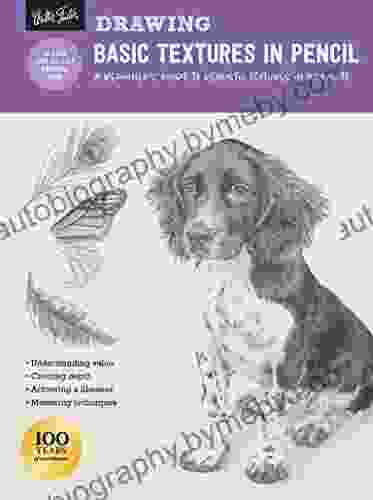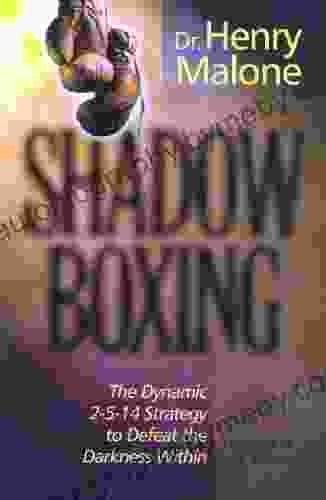Become a Master of Textures with our Beginner's Guide to Realistic Textures in Graphite

Welcome to our comprehensive beginner's guide to drawing realistic textures in graphite. Whether you're a complete novice or looking to enhance your existing skills, this guide will provide you with the knowledge and techniques you need to create lifelike textures in your graphite drawings.
4.5 out of 5
| Language | : | English |
| File size | : | 10958 KB |
| Text-to-Speech | : | Enabled |
| Screen Reader | : | Supported |
| Enhanced typesetting | : | Enabled |
| Print length | : | 40 pages |
What Are Textures?
Textures are the surface qualities of objects that we can see and feel. They can be rough, smooth, bumpy, shiny, dull, and so on. Adding textures to your drawings can help to create a sense of depth, realism, and interest.
Materials You'll Need
Before we dive into the techniques, let's gather the essential materials you'll need:
- Graphite pencils in a range of hardnesses (HB, 2B, 4B, 6B, 8B)
- Paper with a smooth surface (such as Bristol board or drawing paper)
- Pencils sharpener
- Kneaded eraser
li>Tortillons or blending stumps
Basic Techniques
Now that you have your materials, let's explore some basic techniques for drawing textures in graphite:
Hatching
Hatching is a simple but effective technique that involves creating a series of parallel lines to create the illusion of texture. The closer the lines are together, the darker the texture will appear. You can also vary the angle of the lines to create different effects.
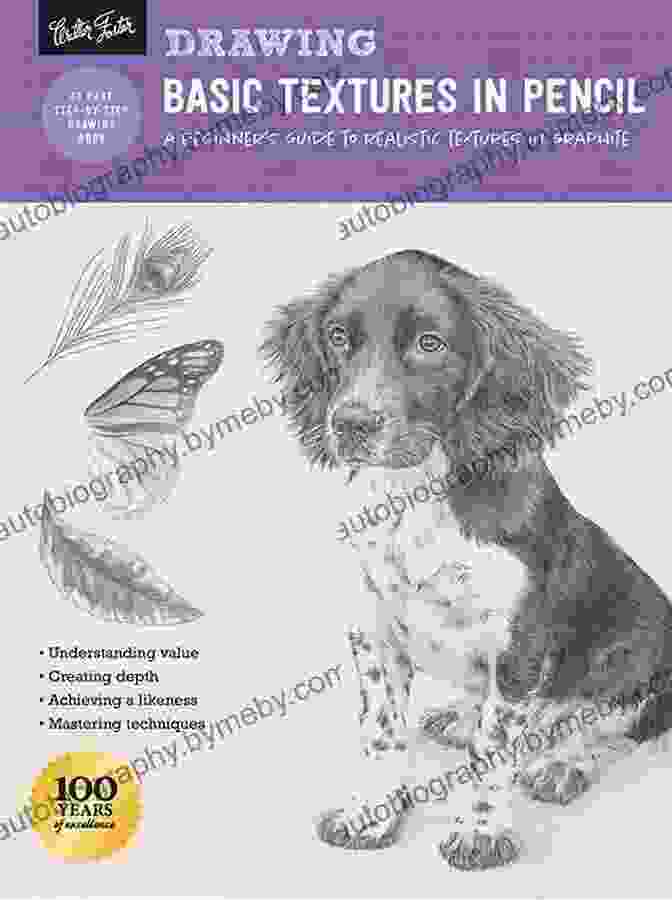
Cross-Hatching
Cross-hatching is a variation of hatching that involves crossing the lines at an angle to create a more complex texture. This technique can be used to create a wide range of effects, from subtle shading to bold patterns.
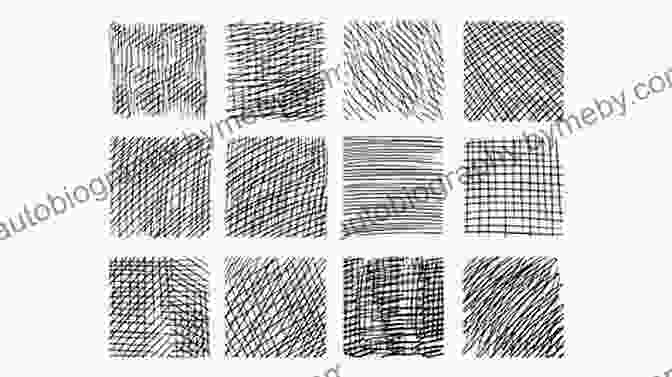
Stippling
Stippling is a technique that involves creating a texture by using small dots. This technique can be used to create a soft,细腻的效果。You can vary the size and spacing of the dots to create different effects.

Burnishing
Burnishing is a technique that involves rubbing the graphite with a burnishing tool (such as a tortillon or blending stump) to create a smooth, polished texture. This technique can be used to create highlights, soften edges, and add a sense of depth to your drawings.
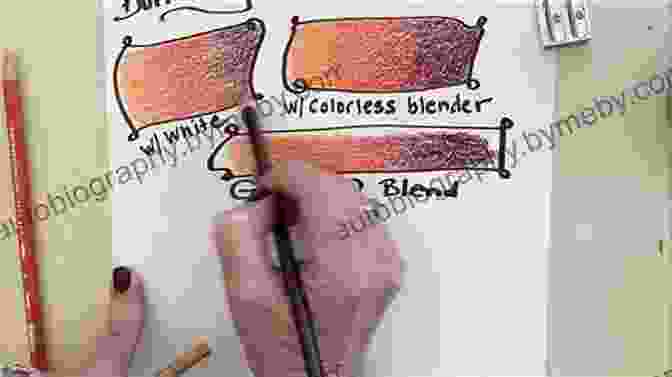
Drawing Different Textures
Now that you've mastered the basic techniques, let's explore how to draw specific textures:
Wood
To draw wood, start by sketching the基本形状of the object. Then, use hatching or cross-hatching to create the grain of the wood. You can also use burnishing to create highlights and add a sense of depth.
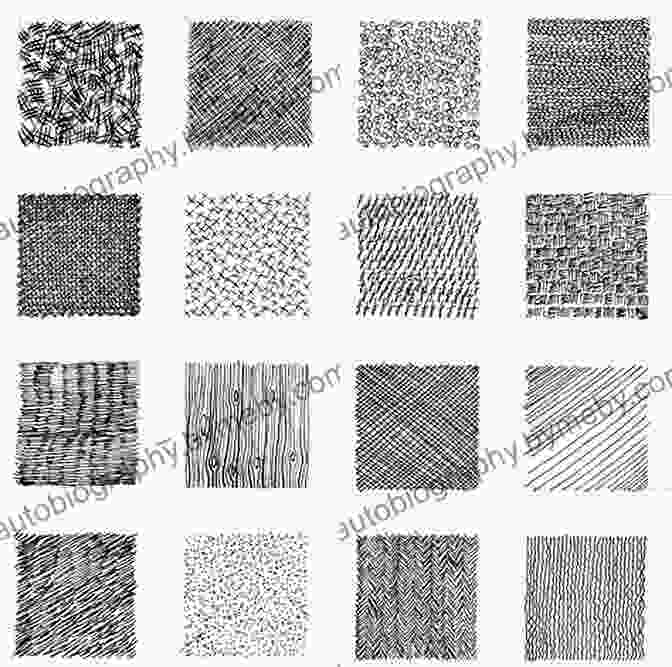
Metal
To draw metal, start by sketching the basic shape of the object. Then, use a combination of hatching, cross-hatching, and burnishing to create the texture of the metal. You can also use a light touch to create highlights and give the metal a shiny appearance.
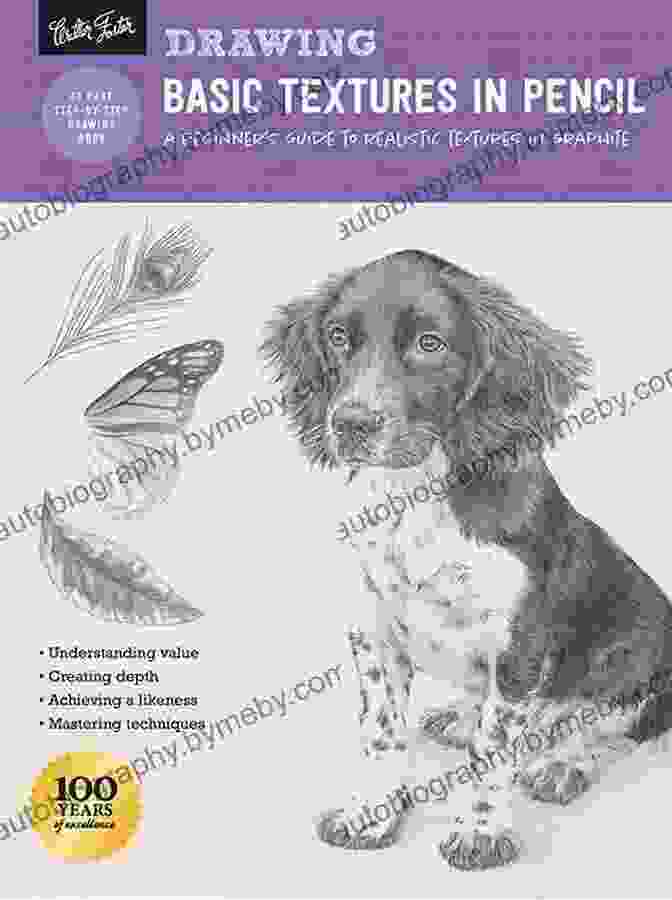
Fabric
To draw fabric, start by sketching the basic shape of the object. Then, use a combination of hatching, cross-hatching, and stippling to create the texture of the fabric. You can also use burnishing to soften edges and add a sense of depth.

Tips and Tricks
Here are a few tips and tricks to help you draw realistic textures in graphite:
- Use a variety of pencil hardnesses to create different effects.
- Experiment with different techniques to find the ones that work best for you.
- Practice regularly to improve your skills.
- Study real-life objects to see how textures are created.
- Don't be afraid to experiment and have fun!
Drawing realistic textures in graphite is a skill that takes time and practice to master. However, with the right techniques and a little bit of patience, you can create stunningly realistic drawings that will bring your subjects to life. We encourage you to experiment with the techniques described in this guide and develop your own unique style. Happy drawing!
4.5 out of 5
| Language | : | English |
| File size | : | 10958 KB |
| Text-to-Speech | : | Enabled |
| Screen Reader | : | Supported |
| Enhanced typesetting | : | Enabled |
| Print length | : | 40 pages |
Do you want to contribute by writing guest posts on this blog?
Please contact us and send us a resume of previous articles that you have written.
 Book
Book Novel
Novel Page
Page Chapter
Chapter Text
Text Story
Story Genre
Genre Reader
Reader Library
Library Paperback
Paperback E-book
E-book Magazine
Magazine Newspaper
Newspaper Paragraph
Paragraph Sentence
Sentence Bookmark
Bookmark Shelf
Shelf Glossary
Glossary Bibliography
Bibliography Foreword
Foreword Preface
Preface Synopsis
Synopsis Annotation
Annotation Footnote
Footnote Manuscript
Manuscript Scroll
Scroll Codex
Codex Tome
Tome Bestseller
Bestseller Classics
Classics Library card
Library card Narrative
Narrative Biography
Biography Autobiography
Autobiography Memoir
Memoir Reference
Reference Encyclopedia
Encyclopedia Anders Halverson
Anders Halverson Benjamin Jelen
Benjamin Jelen Wolfgang Fischer
Wolfgang Fischer Kim Sigafus
Kim Sigafus George Stalk
George Stalk Andrew Morton
Andrew Morton Victoria Westwood
Victoria Westwood Laura Donnelly Bethmann
Laura Donnelly Bethmann Jian Ping
Jian Ping Amy Rosenberg
Amy Rosenberg Amy D Morse
Amy D Morse Amy H Sturgis
Amy H Sturgis Emily Louise Howard
Emily Louise Howard Billie Milholland
Billie Milholland Angela Ardis
Angela Ardis Ned Feehally
Ned Feehally Andrew H Knoll
Andrew H Knoll Andy Pole
Andy Pole Roberto Vormittag
Roberto Vormittag Andrea Friederici Ross
Andrea Friederici Ross
Light bulbAdvertise smarter! Our strategic ad space ensures maximum exposure. Reserve your spot today!
 Leslie CarterFollow ·11.3k
Leslie CarterFollow ·11.3k Ralph Waldo EmersonFollow ·16.7k
Ralph Waldo EmersonFollow ·16.7k Patrick HayesFollow ·18.6k
Patrick HayesFollow ·18.6k Isaiah PowellFollow ·16.5k
Isaiah PowellFollow ·16.5k Tom HayesFollow ·8.1k
Tom HayesFollow ·8.1k Peter CarterFollow ·8k
Peter CarterFollow ·8k Elmer PowellFollow ·4.4k
Elmer PowellFollow ·4.4k Maurice ParkerFollow ·11.6k
Maurice ParkerFollow ·11.6k
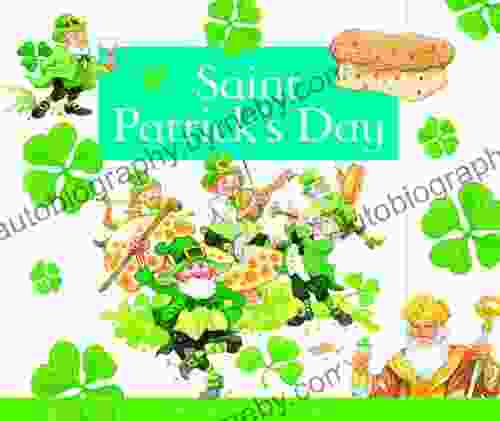
 Bryce Foster
Bryce FosterCelebrate the Luck of the Irish: Unveiling Saint...
As the verdant hues of spring brush...

 Chase Simmons
Chase SimmonsCody Rodeo: A Photographic Journey into the Heart of the...
Step into the arena of the...

 David Mitchell
David MitchellUnveiling the Enchanting World of Door County Quilts: A...
Step into the Heart of Amish Country in...
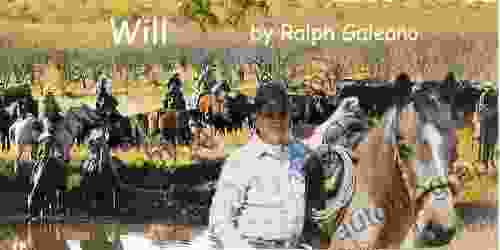
 Floyd Powell
Floyd PowellCowboy Chatter: Unraveling the Enigmatic Tales of the Old...
Step into the...
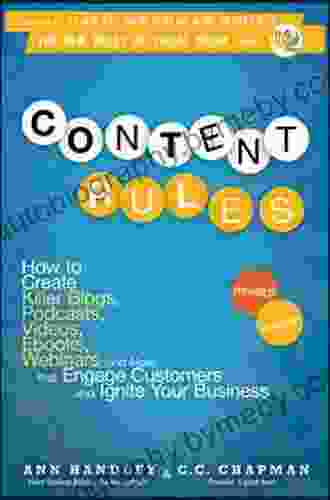
 Ismael Hayes
Ismael HayesUnlock Content Marketing Mastery: How to Create...
In today's digital landscape, content is...

 Boris Pasternak
Boris PasternakMore Than 200 Hardball Questions For The Thinking Fan
The Ultimate Baseball Trivia Challenge Are...
4.5 out of 5
| Language | : | English |
| File size | : | 10958 KB |
| Text-to-Speech | : | Enabled |
| Screen Reader | : | Supported |
| Enhanced typesetting | : | Enabled |
| Print length | : | 40 pages |


